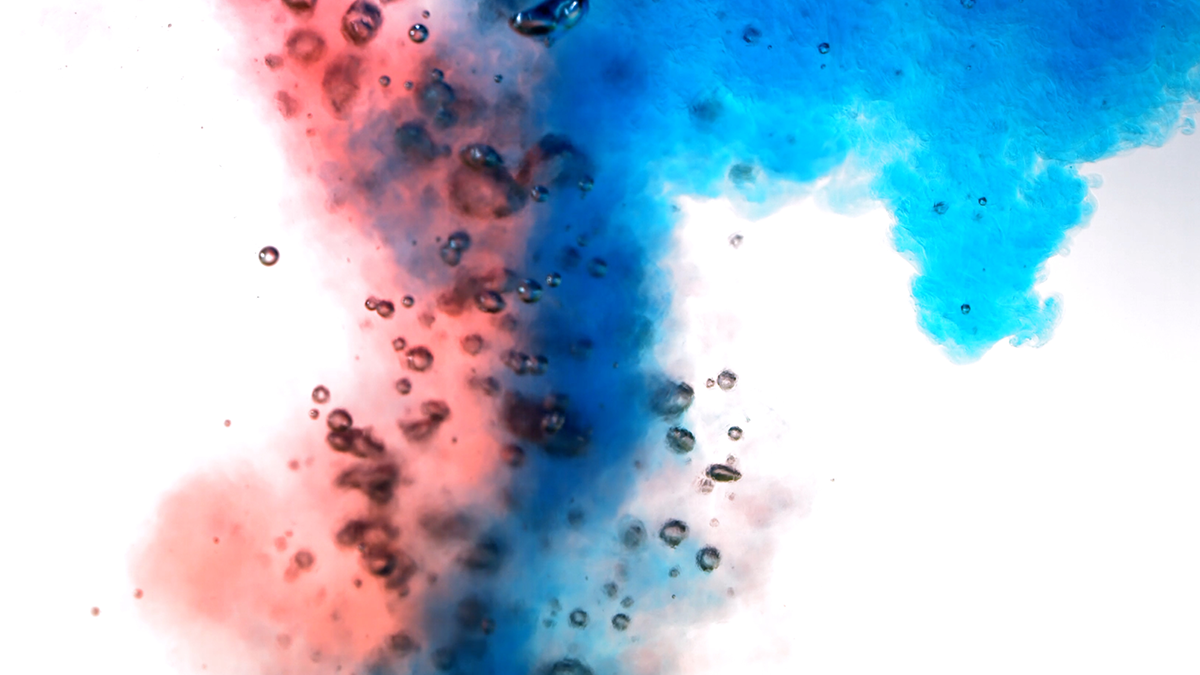Nitrate vs Ammonium in Canxxxis
This "Research Highlight" is aimed at explaining key advancements in science relative to cultivation. In this article, we’ll evaluate a recent study that investigates the comparative impacts of ammonium (NH4) and nitrate (NO3) nitrogen sources on the physiology and growth of medical canxxxis in hydroponic systems. Through a comprehensive exploration of this research, we aspire to provide valuable insights into the optimization of hydroponic techniques and cultivation performance.
Saloner and Bernstein 2022
Study Overview
Nitrogen is a crucial nutrient for plants, and its form - either as ammonium (NH4+) or nitrate (NO3-) - can greatly affect plant function and metabolic responses. The balance between these two forms can specifically impact the production of certain valuable compounds in some plants. In this excellent study, Avia Saloner and colleagues investigated the effects of five different NH4/NO3 ratios on plant growth and found that:
- A higher NH4 supply led to adverse responses in secondary metabolite production, yield, plant height, and other factors.
- Moderate levels of NH4 (10-30%) did not have a significant negative impact and were considered suitable for certain types of plant cultivation.
- Ratios above 30% NH4 are not recommended, as they can increase the potential for severe and fatal toxicity damage to the plant.
Background
Competitive market conditions have lead to increasing demand for high-quality, chemically standardized medicinal canxxxis plants due to their potential in modern medicine. The production of various phytochemicals including canxxxinoids and terpxxxss in these plants is influenced by environmental and cultivation conditions. Recent research has identified plant sensitivity to mineral nutrition, including nitrogen (N) and phosphorus (P) status, as well as humic acid supplementation. This current study aimed to investigate the effects of different ammonium (NH4+) to nitrate (NO3-) N source ratios on the morpho-development, physiology, and secondary metabolism of a particular medicinal plant.
Nitrogen uptake in plants is primarily through NO3- or NH4+ ions, which are then assimilated into amino acids and other N metabolites. NH4/NO3 ratios play a critical role in plant energy status, pH adjustment, mineral uptake, and other metabolic and regulatory processes. Many agricultural plants can perform well with up to a certain level of NH4 relative to NO3 supply, at a range of 10-30% NH4/NO3 ratio. However, the optimal NH4/NO3 ratio for the cultivation of this specific medicinal plant is unknown.
Materials and Methods
Growing Conditions
In this study, a specific medical cultivar was used as a model to investigate the effects of different ammonium (NH4+) to nitrate (NO3-) nitrogen source ratios. The plants were propagated from rooted cuttings, replanted to 3L plastic pots, and grown in perlite media under controlled environmental conditions. Uniform plants were selected and divided into five treatment groups with varying N-NH4+ supply: 0, 10, 30, 50, and 100%. The remaining nitrogen was supplied as N-NO3- to maintain a uniform total nitrogen level.
The plants were grown under specific photoperiods: initially, a long photoperiod (18/6 h light/dark) during the vegetative phase, followed by a short photoperiod (12/12 h light/dark) to induce inflorescence development. Light, temperature, and relative humidity were regulated throughout the experiment. Irrigation was provided via pressure-compensated drippers, and mineral nutrients were supplied in the irrigation solution at each event.
The irrigation solution contained various micronutrients and macronutrients, with concentrations selected based on previous studies to optimize plant development and function. The pH of the irrigation solution was adjusted to 5.6-6.0. The experiment followed a complete randomized design, with five replicated plants per treatment.
Mineral Analysis
Mineral nutrient concentrations in plant organs were analyzed at the end of the experiment, 59 days after the initiation of the NH4/NO3 treatments. Electrical conductivity (EC) and pH of the irrigation and leachate solutions were measured weekly.
Plants were sampled for physiological analyses 45 days after the start of the fertigation treatments, as treatment effects were expected to be prominent by this time and gas exchange activity was still active. Various physiological parameters, including photosynthetic pigments, osmotic potential, membrane leakage, relative water content (RWC), photosynthesis rate, transpiration rate, stomatal conductance, intercellular CO2 concentration, and water use efficiency (WUEi), were determined following established protocols.
Plant Development
Plant architecture and development parameters, including plant height, stem diameter, inflorescence length, and the number of nodes on the main stem, were measured one week before the end of the experiment. Biomass accumulation in plant organs (leaves, stems, inflorescences, inflorescence leaves, and roots) was assessed by destructive sampling 59 days after the initiation of the NH4/NO3 treatments. Dry weights were determined after drying the samples at 64°C for 48 hours (128 hours for inflorescences).
Secondary Metabolite Analysis
Secondary metabolite concentrations were evaluated in primary and secondary inflorescences at the end of the experiment, 59 days after the initiation of treatments. Samples were prepared by wet-trimming, drying, and curing.
For secondary metabolites, concentrations of several compounds were below detection limits. Total weights of relevant metabolites were calculated considering differences in mass between carboxylated and decarboxylated forms.
Analysis of aromatic compounds involved extracting volatiles from 100 mg of dried plant material, using MTBE and ethyl myristate as an internal standard. Samples were analyzed with a GC-MSD system, and compounds were identified by comparing retention indices and mass spectra with authentic samples, literature, and GC-MS libraries. Content was not examined in plants from the 100% NH4 treatment group due to severe NH4 toxicity and wilting.
Results
Visual Characteristics
Plants in the 0-30% NH4 treatments appeared visually similar, with adequate structure and color. Plants in the 50% NH4 treatment appeared normal for most of the experiment, but in the last two weeks, leaves became necrotic and wilted, leading to the death of 40% of the plants. The 100% NH4 plants experienced stunted growth, toxicity symptoms, and necrosis from early stages, ultimately resulting in plant death. The visual response of the aerial parts of the plant corresponded with root development, which showed optimal development under 0-50% NH4 and severe damage under 100% NH4.
Development and Biomass
Plant development was significantly influenced by the NH4/NO3 ratio. Plant height and inflorescence length decreased with increased NH4, showing optimal growth with 0-10% NH4 and substantial damage with 100% NH4. Side inflorescences exhibited similar trends but were shorter than top inflorescences. Stem diameter and node count on the main stem were smaller in 100% NH4 plants.
Biomass production decreased with increased NH4 supply. Dry biomass of all organs and whole plants were highest under complete NO3 nutrition (0% NH4) and lowest under 100% NH4. Inflorescence, stem, and whole plant biomass were highest under 0% NH4, significantly lower under 10-50% NH4, and lowest under 100% NH4. Fan leaf biomass showed a similar trend, but under 50% NH4, it was significantly lower than under 10-30% NH4. NH4/NO3 ratio did not significantly affect biomass of inflorescence leaves and roots at the 0-50% NH4 range. Inflorescence biomass (plant yield) decreased by 35, 32, 46, and 97% with increasing NH4 supply from 0 to 10, 30, 50, and 100%, respectively.
Canxxxinoid Profiles
The main findings generally indicate canxxxinoid concentrations decreased with as percentage of NH4 increased.
- Txx concentrations decreased as NH4 supply increased.
- Other metabolites in both top and side inflorescences, as well as Txx in the top inflorescence, were not significantly affected by NH4/NO3 treatments in the range of 0–50% NH4 but were significantly lower under 100% NH4.
- The total amounts of major canxxxinoids produced per plant decreased with the increase in NH4 supply. The total weight of Txx forms, Cxx forms, and Cxx forms followed a trend of 0 > 10–50 > 100 percent NH4.
Terpxxx Profiles
The study found that concentrations of all identified monoterpxxxs were highest under 0–10% NH4, except for limonene, fenchol, and α-phellandrene, which had higher concentrations under 10% NH4 than 0% NH4. The concentrations of myrcene, δ-2-carene, and (E)-β-ocimene were not affected by the NH4/NO3 ratio. Limonene, fenchol, borneol, and terpinen-4-ol concentrations decreased when NH4 supply was elevated above 10%. α-pinene, β-pinene, linalool, α-phellandrene, and α-terpineol did not decrease as NH4 supply increased to 30% and were significantly lower only under 50% NH4.
Tissue Mineral Accumulation
The NH4/NO3 application ratio affects the uptake, translocation, and accumulation of various nutrients in plants, with nutrient-specific responses. Increasing NH4 supply led to higher total nitrogen (N) concentration in the stem and inflorescences, and N accumulation in leaves up to 50% NH4. The potassium (K) concentration in leaves and inflorescences was higher under higher NH4 levels, while phosphorus (P), calcium (Ca), and magnesium (Mg) concentrations varied depending on the plant part. In general, higher NH4 levels led to higher P concentrations in leaves but lower Ca and Mg concentrations.
The NH4/NO3 ratio had minor effects on micronutrient concentrations. Zinc (Zn) and manganese (Mn) concentrations in leaves were not significantly affected, while iron (Fe) concentration was highest under 100% NH4. In stems and roots, Zn, Mn, and Fe concentrations showed different patterns, with some highest concentrations occurring at specific NH4/NO3 ratios. Copper (Cu) concentration in all plant organs was higher under 100% NH4 compared to lower NH4/NO3 ratios.
The pH of the irrigation solutions was similar for all treatments, but the pH of the drain solution varied depending on the NH4/NO3 ratio. Higher NH4 levels led to a lower pH in the drain solution, indicating acidification of the rhizosphere, while higher nitrate (NO3) levels resulted in a higher pH, showing alkalization. This highlights the importance of the NH4/NO3 ratio in influencing the nutrient availability and uptake in plants.
Discussion
Like many crops, medical caxxxbis is sensitive to NH4/NO3 ratios, with optimal results in development, physiology, yield, and secondary metabolite production when only NO3 is supplied. The lowest NH4 levels did not cause toxicity symptoms but reduced yield. At 50% NH4, toxicity injuries appeared, and at 100% NH4, plants suffered severe damage.
NH4 toxicity is a well-known issue in plants, causing severe negative effects on plant development and physiological parameters. In this study, plants exposed to only NH4 experienced drastic impacts, including halted gas exchange functions, reduced water content and photosynthetic pigment contents, high osmotic potential, and impaired membrane stability. Consequently, this led to decreased biomass production, development of visual toxicity symptoms, and plant death.
The study showed that the toxicity damage was cumulative over time, with plants in the 50% NH4 treatment also demonstrating toxicity symptoms eventually. The damage experienced under high NH4 levels may also be related to low or lack of NO3 supply. Conversely, optimal plant function observed under 0% NH4 (and 100% NO3) may be due to high NO3 supply, which promotes essential mineral uptake and allows for proper gas exchange and chlorophyll production.
NH4 toxicity in plants seem to be a result of several mechanisms working together. These mechanisms include reduced chlorophyll content, decreased carbohydrate production, unstable root pH homeostasis, oxidative stress, futile transmembrane NH3/NH4 cycling, toxic NH3 accumulation, and decreased uptake of vital cations.
In the study on canxxxis, the NH4 toxicity response was found to be an integration of these mechanisms including: (i) reduced photosynthetic pigment contents inhibited gas exchange and photosynthesis, (ii) increased membrane leakage indicated oxidative damage or direct toxic effect from NH3 overexposure, (iii) decreased rhizosphere pH potentially damaged root homeostasis and water uptake, and (iv) reduced tissue concentrations of essential macronutrients Ca and Mg, likely due to competition with NH4, further weakened the plants.
The NH4/NO3 ratio in the study significantly affected the canxxxis plant's ionome (the profile of ions within plant tissue) and its ability to absorb and transport nutrients. Key findings include:
- NO3 accumulation in plants increased with the concentration of supplied NO3, confirming that different NH4/NO3 ratios induce changes in N accumulation.
- Higher NH4 promoted N uptake and translocation, directly affecting N metabolism.
- Ca and Mg concentrations in plant organs decreased with increased NH4 supply, likely due to competition with NH4.
- K concentration moderately increased in most plant organs with increased NH4 supply, but the overall amount of K in the entire plant decreased, correlating with known competition for root uptake between these two cations.
- P concentration generally decreased with increased NO3 supply, indicating an antagonistic anion-anion relationship between NO3 and H2PO4 uptake in canxxxis.
- Micronutrient concentrations (Mn, Zn, Fe, and Cu) were moderately affected by the NH4/NO3 ratio, with the most pronounced responses and highest accumulation levels found in the roots. This is consistent with previous studies on micronutrient accumulation in medical canxxxis.
The effects of NH4/NO3 ratio on secondary metabolism in canxxxis seem to be caused by two possible driving forces: (i) involvement of a stress response mechanism and (ii) the effect of availability of N in the plant tissues (following the "Carbon-nutrient balance hypothesis").
i. Stress response mechanism:
- Many secondary metabolites showed the highest production under low NH4 supply and an overall reduction under increased NH4 supply.
- Secondary metabolism in various plants has been shown to increase as part of a stress response elicited by biotic or abiotic stresses.
- In this study, however, a negative correlation was observed between secondary metabolism and plant stress. Hence, canxxxinoid and terpxxxid production is not linked to the NH4-induced stress response.
ii. Effect of N availability in the plant tissue:
- The study found that optimal N nutrition and high N concentration in the plant do not correlate with high secondary metabolism in canxxxis.
- Results supported the carbon-nutrient balance hypothesis (we will explore this in an upcoming article), which suggests that under low N content, production of N-rich primary metabolites and growth are restricted, leading to a shift in plant metabolism and energy expenditure towards the production of metabolites without N, such as canxxxinoids and terpxxxids.
- The production of secondary metabolites in the canxxxis inflorescence was highest under low N concentration in the inflorescence and the plant, and decreased with increasing N concentrations.
- It was suggested that there is a specific impact of N in the inflorescence, creating a negative correlation between inflorescence N concentration and the production of secondary metabolites without N, such as canxxxinoids and terpxxxids.
Overall, the study's results indicate that the production of secondary metabolites in canxxxis is not linked to the NH4-induced stress response and is instead negatively regulated with the total N concentration in the inflorescence.
Conclusion
The response of medical canxxxis to different NH4/NO3 ratios can be summarized as follows:
- The highest inflorescence yield and secondary metabolite contents were obtained under NO3 only supply, suggesting that N-NO3 nutrition is optimal for medical canxxxis plant function.
- Moderate levels of 10-30% NH4 (20-60 ppm NH4) did not cause physiological damage, and had only minor adverse effects on inflorescence and canxxxinoid yield.
- NH4 toxicity damage appeared under 50% NH4 nutrition (100 ppm NH4), and severe toxicity symptoms and plant death occurred under the 100% NH4 regime.
- It is not recommended to use levels higher than 30% NH4 for medical canxxxis cultivation.
- Total N concentration in the inflorescence, rather than N-NO3 concentration, governs canxxxinoid and terpxxxid biosynthesis.
- Some genotypic variability in plant response to mineral supply has been observed for canxxxis, suggesting that growers may need to fine-tune N supply and NH4/NO3 ratios for specific cultivars.
The results from this study support the formulation of Front Row Ag products, with the 3-part base supplying solely NO3 nitrogen and, with the addition of Phoszyme at 0.4g/gal, 12.7ppm of NH4 nitrogen. Supplying N in this manner allows for the highest weight and quality from production of secondary metabolites.
Managing over 2500 ft.² of cultivation area? Click HERE to apply for a commercial account and access our commercial support and pricing.




